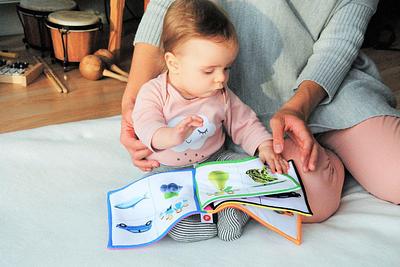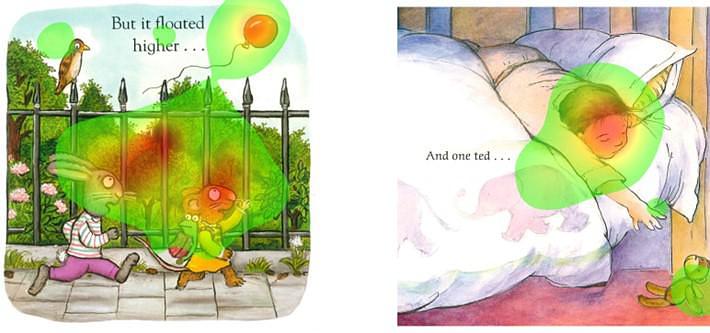Looking for all Articles by Anna Franklin?
Why babies prefer colourful picture books from 3 months old
We know that newborn babies can’t see very well and need high contrast, black and white books. But new research from The Sussex Baby Lab has found that by 3 months old, babies are ready for colourful books.

This article was written by Professor Anna Franklin and Taysa-Ja Newman.
Newborn babies’ vision is very poor, and as a result they benefit from the high contrast of black and white books with big bold shapes and minimal detail. However, by 2–3 months old, babies’ vision has improved. By this age, babies can see the full spectrum of colours, although colours need to be bold and bright for babies to see them. This raises the question of whether black and white baby books are too ‘easy’ for babies by the time they are 3 months old.
The Sussex Baby Lab investigated this question by showing a group of 3–11-month-old infants pages from 100 picture books. The babies’ eye movements were recorded with an eye-tracking camera whilst babies looked at the books.
Analysis of the babies’ eye movements found that by 3 months old, babies looked most at the colourful books and least at the books which were either black and white, or that had a very de-saturated (e.g. pastel) palette. This finding relates to something developmental psychologists call the ‘Goldilocks Effect’ – babies prefer stimuli which are ‘just right’ for their ability. By 3 months, black and white books don’t provide enough visual challenge, but pastel books are still too hard to see – colourful books however are ‘just right’ for babies’ newly developed colour vision.
The book pages which were in the ‘top 10’ most looked at, had a bold and bright colour palette, with a variety of contrasting colours. These books also had a ‘blocky’ design, with large patches of colour and clearly defined shapes.

Analysis of the babies’ eye movements also highlighted how much babies seek out faces. Babies often instantly fixated on the faces in the books, even when the faces weren’t human. Babies were especially drawn to large black and white eyes, and could also spot faces in complex pictures, often flitting between the different faces in a scene.

Surprisingly, although the books weren’t read to the babies, the eye-movement heat maps showed that babies often looked for a long time at the objects and information most relevant to the story. This suggests that although young babies may not understand the story as you read to them, they are still noticing the things that you are talking about. This coupling of words and pictures is likely to boost the learning of words later in development.
Overall, the findings suggest that, by 3 months old, babies are ready for the colourful world of picture books, readily seek out faces and relevant objects, and are likely to learn much from being read to.
Find out more in our watch on demand webinar about books and baby vision(this link will open in a new window).
About the authors
Professor Anna Franklin leads The Sussex Baby Lab at the University of Sussex. She has researched babies' colour vision and visual development for over 20 years. She also consults for children’s book publishers on how to design baby books which are optimised for how babies see. She is the author of the BabyVision book series, due to be published by Child’s Play in autumn 2024. Taysa-Ja Newman is a research assistant at The Sussex Baby Lab and conducted and analysed the research presented here.